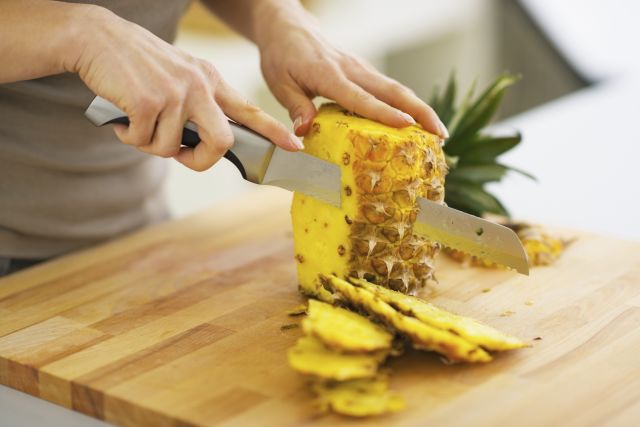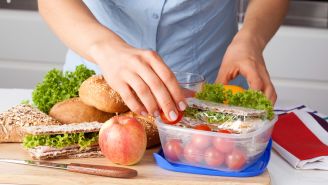Updated on January 16, 2024.
Fruit that comes presliced is convenient, especially if you have a busy lifestyle, fatigue problems, or mobility limitations. In fact, it can be necessary and important for people with a disability, who may not be able to cut up or eat whole produce.
But if it’s possible, you may want to consider whole fruit over fruit that’s sliced ahead of time. There are a few reasons.
Vitamin loss
The amount of vitamin C in fruit starts to decline soon after it’s been sliced, according to some experts. And the longer you wait to eat it, the less vitamin C it will have. This isn’t true for whole fruit, which will retain its vitamin content as long as it’s fresh enough to eat. Fruit that’s peeled or trimmed might also lose some of it vitamins and other nutrients, as many of them are concentrated close to the skin. By buying whole fruit and slicing it yourself, you can keep it fresher and avoid cutting away more than necessary.
Even if it’s otherwise fresh, precut fruit might also dry out over time. This can cause it to lose water-soluble vitamins, like vitamin C and the B vitamins, which include thiamin, niacin, folate, and riboflavin among others. If precut fruit has a whitish outer layer on it (but isn’t moldy), this can mean it’s started to lose its moisture.
Shorter shelf life
Sliced fruit has more surfaces that are exposed to the air, unprotected by a rind or layer of skin. Because of this, it will break down faster than whole fruit and may become rotten sooner. Refrigerating and keeping it in an airtight container can slow this process, but won’t stop it completely. Make sure to buy precut fruit that has been kept cold, store it in the fridge or with ice, and eat it soon after purchase.
Safety issues
In some cases, precut fruit can put you at higher risk of food poisoning than whole fruit alternatives. Dangerous germs common in fruit and vegetables include salmonella, E. coli, and listeria. Unwashed fruit can also carry toxoplasma, a parasite that’s especially dangerous for pregnant people and their fetuses. Though most people who develop toxoplasmosis from toxoplasma exposure show no signs of it, some develop flu-like symptoms that last for a month or more.
Bacteria is also more likely to get into prefruit without the skin to protect it, making it more difficult to wash effectively. What’s more, germs can be transferred into the fruit during the cutting process if the skin isn’t washed properly first. By sticking with whole fruit, you can be sure that the skin and utensils are all properly cleaned before slicing.
The Centers for Disease Control and Prevention (CDC) recommends the following tips for preparing and storing fresh fruit safely:
- Wash your hands with soap and water before and after breaking down your produce. Clean any cutting boards, countertops, or utensils, too.
- Place whole fruit under running water and scrub off any dirt or debris, even if you aren’t going to eat certain parts of it, like the peel.
- Clean water is all that’s needed. You shouldn’t use bleach, produce wash, soap, or any other product on the fruit. The one exception: You can try one part vinegar to three parts water for washing berries.
- Cut or tear away any sections with bruises or other damage. Bacteria can more easily invade fruits that are bruised.
- Store fruit away from fish, poultry, and meat.
- Peeled, cut, and cooked fruit should be stored in a clean container in the fridge within two hours in most cases, or within one hour if it your environment is particularly hot.
The bottom line
Precut fruit is popular for a reason. It saves time and effort, you don’t need to buy special tools, and it’s ideal for people with physical limitations that make chopping difficult. But if you’re able to buy whole fruit and prepare it yourself, you can feel confident that it’s likely safer and you’re getting more health benefits.







